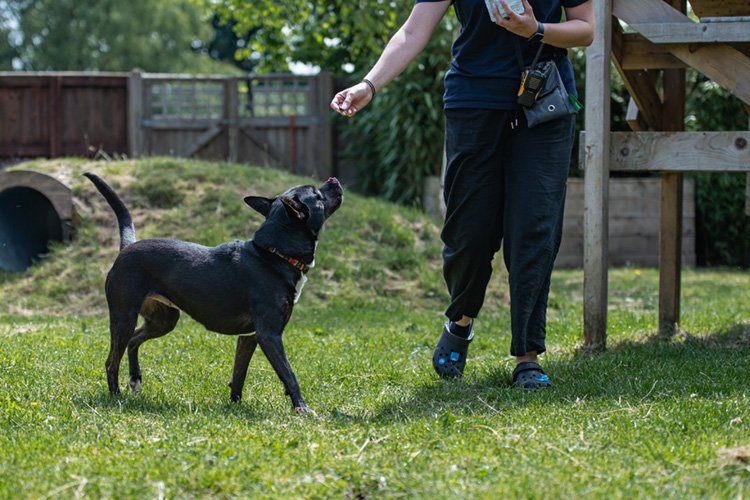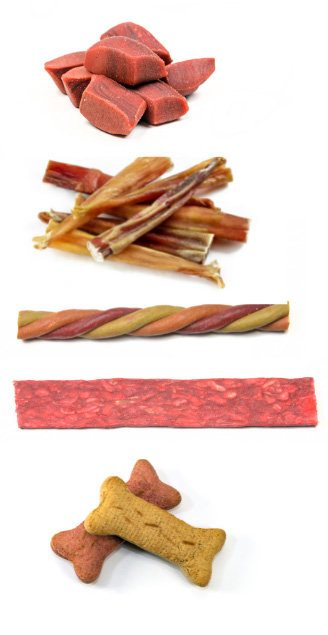New cat
How to set up your home to help your new cat settle in quickly
Cats, Adopters, Cat behaviour, Kitten

Teach these useful commands to build a bond and keep them close, especially good for newly adopted dogs or those who can be reactive or easily distracted out on walks.
Start in your house and then once they have the idea move to busier places outdoors as they improve.
Below, Jackson the puppy learning touch – Jackson had a very short attention span and would jump up. Not so bad then but we knew he had the potential to grow into a 30 or 40kg dog! So the touch also helps him learn 'four paws on the floor' rules.
One of the most simple and effective games to play with your dog is to reward them for making eye contact with you. This is a great way to keep and hold your dog's attention when there is something you don't want the dog to react to.
Encouraging your dog to sniff the ground is great – this sniffing behaviour is naturally used by dogs with great social skills as a signal to another dog asking them to calm things down. All you have to do is throw a few treats on the floor, just out of reach of the dog. Tell your dog to 'Find it!' and watch as they happily sniff about eating the treats ignoring the other distractions. You can even teach your dog to wait until you have thrown the treat.
TOP TIP Use treats which match the situation – the more distracting the environment the more tasty the treats you need.
Being able to quickly reorient yourself and your dog in case of an oncoming emergency, like another dog, is a great skill but you do have to practice lots when you don't need it!
You can make it fun by running a few steps once you have turned and playing a game with your dog instead of using treats every time.
As with other games, move out to a quiet outdoor space when you are both ready. It is important that your dog doesn't start to associate the sudden change of direction with another dog or person coming towards them so begin practice when dogs are in the distance and gradually work closer to the other dog or person.
 This is an exercise which teaches your dog that to get the thing they really want they must pay attention to you and wait for you to release them. This can really help dogs deal with the frustration of being on lead in a constructive way.
This is an exercise which teaches your dog that to get the thing they really want they must pay attention to you and wait for you to release them. This can really help dogs deal with the frustration of being on lead in a constructive way.
Start by making a list of 20 to 30 things your dog likes and put them in order of awesomeness from your dog's point of view. At the bottom may be a dry dog biscuit, then a boring treat, then a good dog treat, then a bit of ham then and at the top may be your dogs favourite ball or a bit of warmed up liver pate on toast – all depending what your dog loves the most. The more items you have in the list the better as each stage should be slightly more challenging for your dog.
You can repeat with the same item, or if your dog gets it quickly you can move up your list to the next item. By the time your dog has completed a few stages you can start rewarding with smaller titbits and treats as a distraction before the dog gets the item.
What do I do if my dog doesn't leave the treat?
Congratulations! You already have an extremely focused dog and all you need to do is redirect that focus. However, you may have made this a bit too hard for your dog at this stage. Try the following...
What do I do if my dog just isn't interested?
Try practicing when your dog is hungry – use their bowl of food just before dinner time. You can also use a squeaky toy, a favourite person coming in, a toy being thrown or bounced on the floor, a favourite sniff spot on a walk or a dog to go and play with as rewards for this exercise.